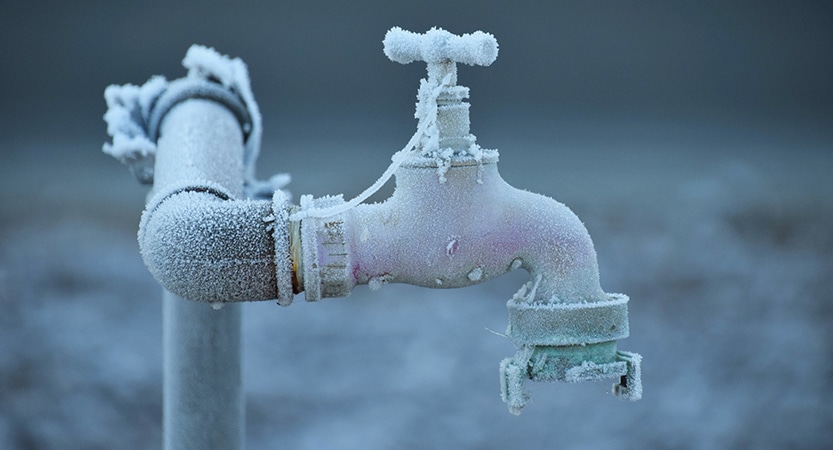Tips to Protect Pipes from Freezing: Professional Tips
Tips to Protect Pipes from Freezing: Professional Tips
Blog Article
Right here on the next paragraphs you can find a bunch of good quality points regarding Preventing and dealing with frozen pipes.

Cold weather can wreak havoc on your plumbing, especially by freezing pipes. Here's how to stop it from taking place and what to do if it does.
Intro
As temperatures drop, the threat of icy pipelines boosts, potentially resulting in costly fixings and water damage. Understanding just how to avoid icy pipes is essential for property owners in cold environments.
Prevention Tips
Protecting vulnerable pipelines
Cover pipes in insulation sleeves or make use of heat tape to secure them from freezing temperatures. Concentrate on pipes in unheated or external areas of the home.
Heating methods
Maintain interior spaces appropriately heated, particularly areas with plumbing. Open closet doors to permit cozy air to circulate around pipes under sinks.
Exactly how to recognize icy pipelines
Seek lowered water flow from faucets, uncommon odors or noises from pipes, and visible frost on exposed pipes.
Long-Term Solutions
Structural adjustments
Take into consideration rerouting pipelines away from exterior walls or unheated locations. Include additional insulation to attics, basements, and crawl spaces.
Updating insulation
Buy top quality insulation for pipes, attic rooms, and walls. Proper insulation aids preserve consistent temperatures and reduces the threat of frozen pipes.
Securing Outdoor Pipes
Garden tubes and outside taps
Detach and drain yard hoses prior to winter. Set up frost-proof faucets or cover outdoor faucets with shielded caps.
Understanding Icy Pipelines
What creates pipes to freeze?
Pipes freeze when subjected to temperature levels listed below 32 ° F (0 ° C) for extended periods. As water inside the pipelines ices up, it increases, taxing the pipeline wall surfaces and possibly causing them to burst.
Threats and damages
Frozen pipes can bring about water system disturbances, residential or commercial property damages, and costly repair work. Ruptured pipes can flood homes and cause extensive architectural damage.
Signs of Frozen Pipeline
Recognizing icy pipes early can avoid them from rupturing.
What to Do If Your Pipes Freeze
Immediate actions to take
If you suspect icy pipelines, maintain faucets open to alleviate stress as the ice thaws. Make use of a hairdryer or towels taken in hot water to thaw pipelines slowly.
Verdict
Stopping frozen pipelines needs aggressive steps and fast feedbacks. By understanding the reasons, signs, and preventive measures, home owners can safeguard their pipes throughout cold weather.
5 Ways to Prevent Frozen Pipes
Drain Outdoor Faucets and Disconnect Hoses
First, close the shut-off valve that controls the flow of water in the pipe to your outdoor faucet. Then, head outside to disconnect and drain your hose and open the outdoor faucet to allow the water to completely drain out of the line. Turn off the faucet when done. Finally, head back to the shut-off valve and drain the remaining water inside the pipe into a bucket or container. Additionally, if you have a home irrigation system, you should consider hiring an expert to clear the system of water each year.
Insulate Pipes
One of the best and most cost-effective methods for preventing frozen water pipes is to wrap your pipes with insulation. This is especially important for areas in your home that aren’t exposed to heat, such as an attic. We suggest using foam sleeves, which can typically be found at your local hardware store.
Keep Heat Running at 65
Your pipes are located inside your walls, and the temperature there is much colder than the rest of the house. To prevent your pipes from freezing, The Insurance Information Institute suggests that you keep your home heated to at least 65 degrees, even when traveling. You may want to invest in smart devices that can keep an eye on the temperature in your home while you’re away.
Leave Water Dripping
Moving water — even a small trickle — can prevent ice from forming inside your pipes. When freezing temps are imminent, start a drip of water from all faucets that serve exposed pipes. Leaving a few faucets running will also help relieve pressure inside the pipes and help prevent a rupture if the water inside freezes.
Open Cupboard Doors
Warm your kitchen and bathroom pipes by opening cupboards and vanities. You should also leave your interior doors ajar to help warm air circulate evenly throughout your home.

Do you appreciate reading about Preventing and dealing with frozen pipes? Create a review down below. We'd be happy to find out your insights about this entry. We are looking forward that you visit us again in the near future. Appreciated our write up? Please quickly share it. Help someone else discover it. Thanks a lot for going through it.
Schedule Appointment Now Report this page